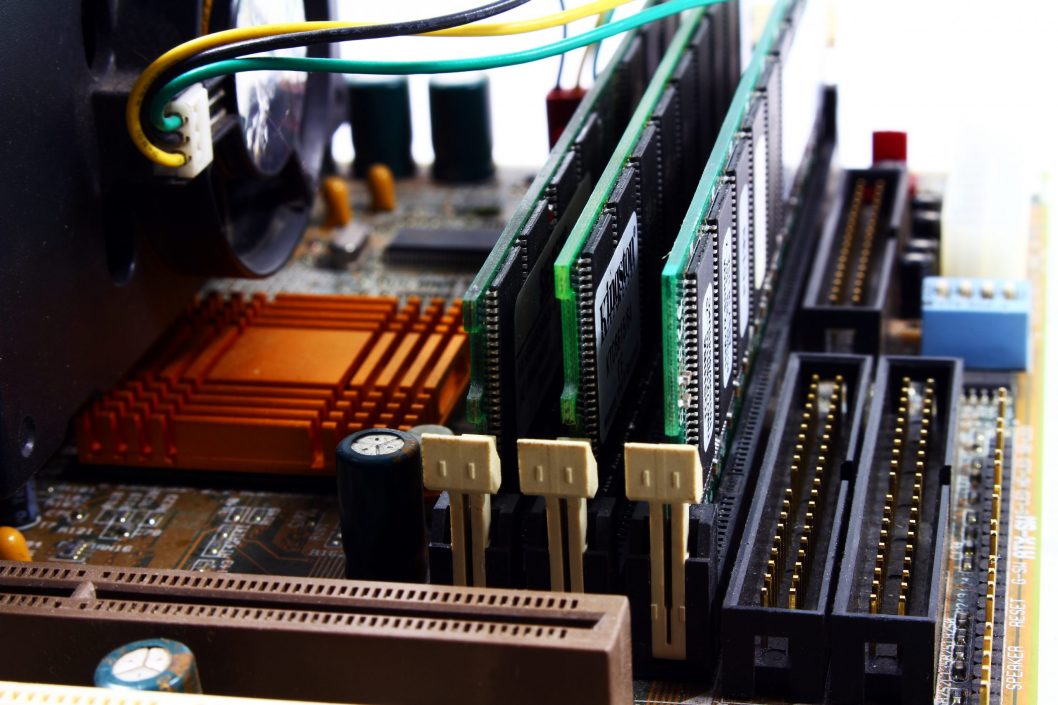Users are familiar with Random Access Memory (RAM), called structure memory. RAM is a state’s short-term random access memory, or in layman’s words, it houses the data that a computer is now utilizing for rapid access. Additionally, running additional applications calls for more RAM.
Various devices utilize different RAM and memory module types. Knowing how additional storage modules work is essential since they are fundamental to the best computer or laptop. The days when there was just one type of RAM module that could be used on both a PC and a top laptop are long gone.
Desktop RAM (DIMM)
Dual In-Line Hardware Support is the system’s memory used by desktop computers (DIMM). This memory storage has numerous RAM chips mounted on a circuit panel. In comparison to other kinds of memory, it can transport data quickly because of this. Connectors in the recollection, which is natively 64 bits, allow it to be connected to the motherboard directly.
Laptop RAM (SO-DIMM)
A RAM kind called a Compact framework double in-line storage unit is used in affordable laptops (SO-DIMM). It makes use of electronic components and is considerably smaller than typical DIMMs.
Desktop RAM versus laptop RAM
Your computer’s Random Access Memory is a temporary storing area that aids in the regular operation of processes. Different RAM varieties operate at varying rates and work with particular systems.
RAM similarities between desktop and laptop computers
Older desktop devices are compatible with earlier iterations of affordable laptop RAM. If you decide to switch, you might be curious whether the two types of memory are compatible. So, an ancient affordable laptop and desktop recollection may change rear and onward.
The RAM’s pin count must match the number of slots on the motherboard. Once successfully transferred to a desktop, the velocities and transfer rates of a laptop’s RAM remain the same.
Both Cannot Expand Past the Motherboard’s Capacity.
Increasing a laptop’s memory is widespread for most individuals, especially those who like gaming and computer-aided design. Both a laptop and a desktop computer have the option of having more RAM.
Although some computers only permit one slot, others offer an additional slot for expansion. The only replacement for those with one place is more RAM. Nevertheless, the motherboard has to be able to accommodate the extra memory for you to increase your computer’s RAM.
What Differentiate Laptop RAM Apart From Desktop RAM
The sleek design of the two types of recollections shows their main distinctions. These variations consist of the subsequent:
Desktop RAM Is Smaller Than Laptop RAM in Size
RAM for laptops and desktop computers differs mainly in form factor. That essentially sums up the pin arrangement and physical dimensions. A desktop RAM is around 100, 168, and 184 mm in size. There are 240 pins altogether. The RAM measures roughly 4.5 inches in length.
In contrast, the RAM in a laptop is 72, 100, and 104. It boosts the laptop’s overall pin count to roughly 204 pins. The RAM in a computer is typically 3 inches long. As a result, a laptop’s RAM is substantially lesser than a desktop’s RAM.
Older Laptop Memory Models Are Incompatible With Modern Desktops
A basic rule in laptop RAM design is that smaller RAM modules do for laptops, and larger RAM units do for desktop PCs. Because the binary is incompatible, you cannot utilize the top laptop RAM in a desktop RAM period.
To use laptop RAM, you can use various desktop adapters. Before using it, you should refer to the form factor, which states that the number of RAM pins should correspond to the number of slots in the computer slot.
Conclusion
Desktop RAM is more extensive than laptop RAM. While memory devices in laptops have 204 pins, DDR4 memory devices used in modern PCs have 240 pins. The typical size of a desktop RAM module is 4.5 inches, whereas the standard size of a laptop memory module is 3 inches.
At $80 for a set of two 8GB modules, DDR4-3200 CAS 16 memory is some of the finest current bargains we’ve seen. But the sword is double-edged. Consider DDR4-3000. A few years ago, it almost wholly replaced DDR4-2933 from the market due to its popularity. This type of memory is still widely accessible and costs less than DDR4-2933. If the slightly quicker DDR4-3000 modules could self-configure at a slower speed, it would be excellent for folks who desired DDR4-2933.
Choosing a DDR4-3000 XMP configuration and manually lowering the data rate to 2933 are options available on some motherboards, but not all of them do. Therefore, you should base your purchase on what you know your processor will work well with in terms of performance and price.

